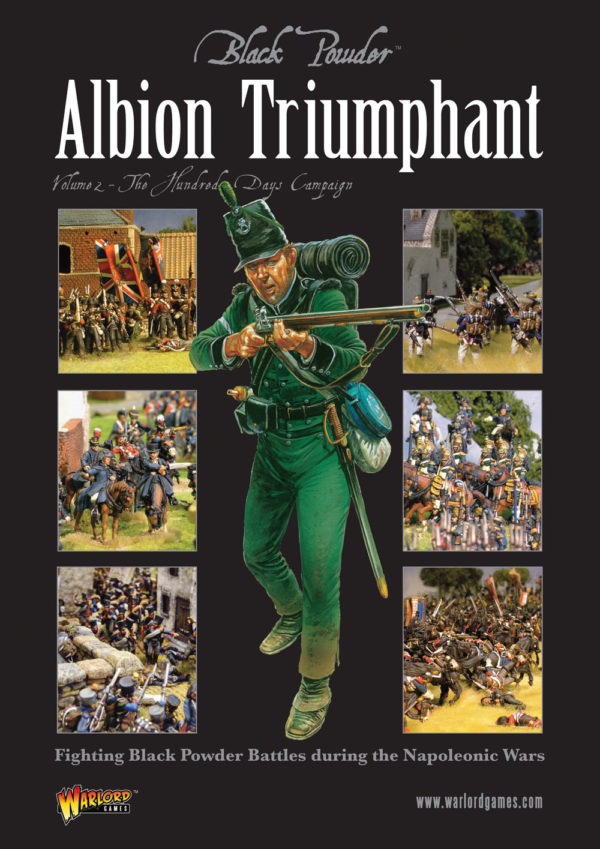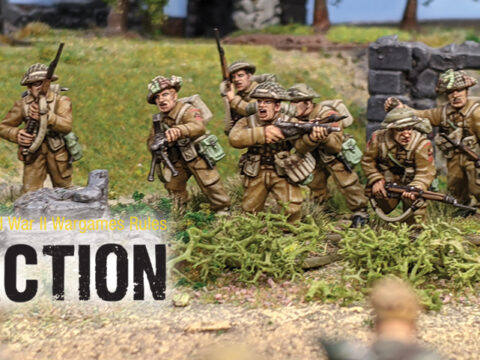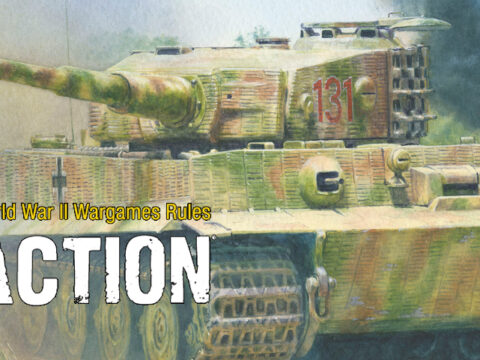The campaign of the ‘Hundred Days’ was to become the thundering climax of the Napoleonic Wars. The shattering of the Grande Armèe in the snows of Russia in 1812, followed by two years of desperate fighting, forced the Emperor of the French to abdicate in 1814.
The elated emperors and kings of the Sixth Coalition exiled Bonaparte to the tiny Mediterranean island of Elba and met in Vienna to pick over the bones of the conquered Napoleonic Empire, aiming to restore the pre-1789 Ancièn Régime in Europe. The ‘Corsican Adventurer’ would not be contained; on the 26th of February 1815, Napoleon left Elba on the flagship of the Elban navy, L’Inconstant, intent on regaining his throne. He had been informed by his spies in mainland France of widespread dissatisfaction with the Bourbon regime, and knew of the divisions amongst the Allies who had removed him from power.
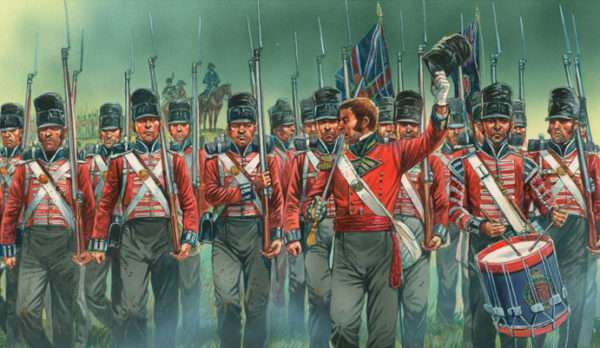
On the 1st of March 1815, Napoleon landed near Cannes in the south of France with a mere 1,050 soldiers. He moved quickly, defying Bourbon forces that were flung before him to apprehend and eliminate his tiny army. On the 9th of March 1815, he issued a proclamation ‘Victory will advance at the
charge; the eagle, with the national colours, will fly from steeple to steeple all the way to the towers of Notre Dame…’ The south of France dissolved into a frenzy of enthusiasm for Bonaparte as the troops sent to capture or kill him changed sides. On the 12th of March, the Congress of Vienna was finally informed of the return of Napoleon and a week later he entered Paris in triumph, just a day after the Bourbon king fled once more into exile. Despite Napoleon quickly stating that he only desired peace, the Congress branded the ‘great thief of Europe’ an outlaw and on the 25th of March, the Seventh Coalition was formed against Napoleon, with each of the Allies promising to contribute 150,000 men to crush him once and for all.
By May, the forces massed against Napoleon were enormous: around 700,000 men surrounded the borders of France. Two massive armies, one Austrian and one Russian, both contained in excess of 200,000 men. More immediately, a Prussian army under the 73 year-old Field Marshal Gebhard Leberecht von Blücher and an Anglo-Dutch Allied force under Wellington were both bivouacked in Belgium. The Allied strategy was to simply re-run their 1814 invasion of France; to grind the French to dust by sheer weight of numbers and avoid any disastrous defeats at the hands of Napoleon.
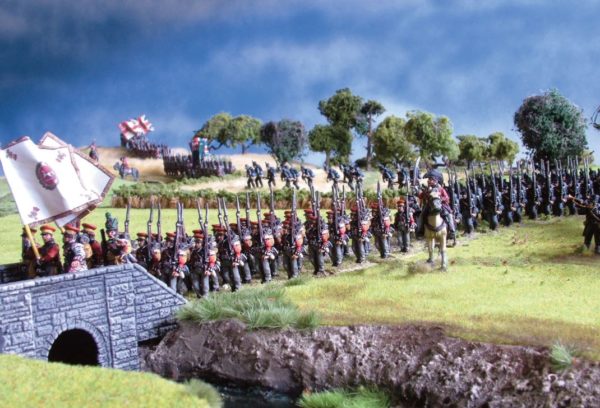 The Armies
The Armies
The restored Emperor moved quickly to rebuild his armies. The 200,000 men left to him under arms by King Louis were concentrated in a central field army. The 123,000-strong Armée du Nord included the Imperial Guard and the heavy cavalry reserve with the remainder being spread into smaller regional
armies to watch the borders. Later in the summer though, up to 500,000 men were available to him.
The British Army that Wellington fielded was a shadow of the superb instrument he had wielded in the Peninsular War. That army had been broken up with the end of the war. Many of the veteran battalions crossed the Atlantic to confront the USA as the War of 1812 raged on, while numerous veterans had been discharged. Only 30% of his infantry were British, with some of these battalions being untried, and even the few experienced units were padded out with ex-militiamen. The rest of the infantry were Belgian, Dutch and German contingents of variable quality, some having previously fought for Napoleon before 1814, or raw conscripts raised by restored rulers who were terrified the French Empire would roll back over their small states (such as Brunswick and Hanover).
The Prussian Army appeared to be fragile. More than 50% of the infantry in Blücher’s host were Landwehr (Militia), though there was a good sprinkling of 1813-1814 veterans in every regiment. Prussia had gained territory from Saxony when the Vienna Congress had redrawn the map, but in early May 14,000 men from this newly acquired area were dismissed following a mutiny. While Napoleon’s Armèe du Nord would be outnumbered by the two forces discussed above, the French had a clear qualitative advantage.This army was full of returning veterans who had fought in Spain and central Europe, many fanatically devoted to Bonaparte.
Napoleon needed to strike fast and hard, and win a crushing victory before the Allies could concentrate. His plan was audacious. He would launch a surprise invasion of Belgium, separate and smash Blücher’s and Wellington’s armies, then drive them both back along their lines of communication.
Belgium had been part of Napoleonic France for many years before 1814, and Bonapartist sympathies were strong: Wellington could be plagued by troop defections as he dashed to Antwerp for a Corunna-style evacuation by the Royal Navy. Meanwhile, a battered Prussian army might only feel secure
once it had re-crossed the Rhine. Once these operational objectives had been won, then perhaps the Allies’ dispute over the fates of Saxony and Poland would deepen and Napoleon could gain a diplomatic accommodation that would leave him on his throne.
Invasion
At 3.30am on the 15th of June 1815, the concentrated French forces invaded Belgium, moving with the army divided into two wings and a central reserve. By midday, the French columns were crossing the Sambre River and Charleroi was in their hands. The next target for Napoleon was the Nivelle-Namur
road that linked the British and Prussian armies. To secure this objective the Emperor ordered Ney and the left wing of the army towards the important road intersection at Quatre Bras and the Anglo-Dutch and German outposts; meanwhile Grouchy was ordered to press the Prussians by heading for Sombreffe. However, neither wing commander would achieve their second objective due to caution at a tactical level. A small number of Prussian battalions fought a valiant delaying action at Gilly, which stalled Grouchy at Fleurus by nightfall. Meanwhile, Ney’s probing regiments had fallen back to Frasnes to await further French forces, having found the small Nassau contingent holding Quatre Bras too formidable to overcome!
The Prussians were the first to realise that the ‘Armée du Nord’ was upon them as they had been alerted to French intentions by the desertion of General de Bourmont, a French divisional commander with royalist sympathies. Several sightings of the French invasion force reached Blücher’s headquarters, prompting the Prussian commander to order a concentration around Ligny and Sombreffe.
Wellington had been slow to respond to the French thrust at Charleroi, believing that Bonaparte’s main thrust would come through Mons to threaten his line of retreat to the coast. The initial report of the Prussians being under attack took six hours to travel the 34 miles to Brussels, as the officer entrusted to carry it was, Wellington complained, “the fattest in the Prussian Army”. At 6pm on the 15th he prepared his divisions to concentrate, but did not order the army to march until he was certain of the point of the French thrust.
The Duke spent the evening of the 15th at the Duchess of Richmond’s ball, and it was here in the early hours of the 16th that he finally understood that the French had crossed the Sambre in great numbers, driving back the Prussians and threatening Quatre Bras.
Wellington was reported to have said that “Bonaparte has gained a day’s march on me,” and his delay in concentrating his army around Nivelles and Quatre Bras had passed the initiative to Bonaparte.

The Battle of Quatre Bras
Ney, advancing on 16 June, found Quatre Bras lightly held by Dutch troops of Wellington’s army, but despite outnumbering the Allies heavily throughout the day, he fought a cautious and desultory battle which failed to capture the crossroads. By the middle of the afternoon, Wellington had taken personal command of the Anglo-Allied forces at Quatre Bras. The position was reinforced steadily throughout the day as Anglo-Allied troops converged on the crossroads. The battle ended in a tactical draw. Later, the Allies ceded the field at Quatre Bras in order to consolidate their forces on more favourable ground to the north along the road to Brussels as a prelude to the Battle of Waterloo.
The Battle of Ligny
Napoleon, meanwhile, used the right wing of his army and the reserve to defeat the Prussians, under the command of General Blücher, at the Battle of Ligny on the same day. The Prussian centre gave way under heavy French attack, but the flanks held their ground. Several heavy Prussian cavalry charges proved enough to discourage French pursuit and indeed they would not pursue the Prussians until the morning of 18 June. D’Erlon’s I Corps wandered between both battles contributing to neither Quatre Bras nor to Ligny.
Manoeuvre
The Prussian defeat at Ligny made the Quatre Bras position untenable. On 17 June Wellington duly fell back to the north. His control of Quatre Bras enabled the Prussians to fall back parallel to his line of retreat and not, as Napoleon had hoped, away from him.
The general retreat of the Prussian army took it to the town of Wavre, and this by default became the marshalling point of the army. General Blücher arrived at Wavre, after falling under his horse whilst leading a counter charge at Ligny, then being ridden over by French cavalry twice. After a meeting, Gneisenau was persuaded to march towards Wellington’s left flank at dawn with the I, II and IV Corps. The IV Corps, under the command of General Bülow von Dennewitz, had not been present at Ligny, but arrived to reinforce the Prussian army during the nights of the 17th and 18th. III Corps formed the rearguard, to hinder the pursuing French.
Napoleon set off via Quatre Bras with the Reserves and combined his forces with the left wing of the Army of the North to pursue Wellington’s forces, which were retreating toward Brussels. Just before the small village of Waterloo, Wellington deployed most of his forces on the rear side of an escarpment. He placed some of his forces in front of the main deployment in two fortified farmhouses at the base of the escarpment, which guarded the two roads to Brussels.
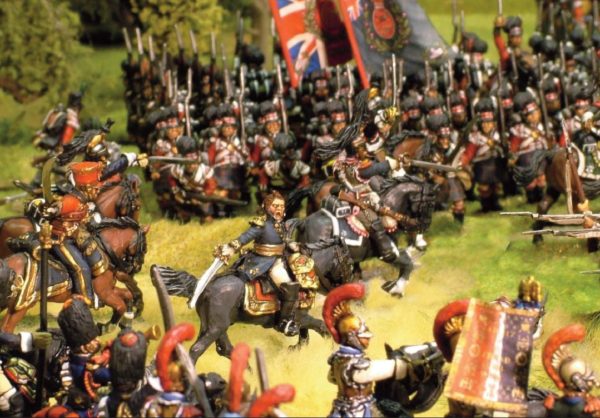
The Battle of Waterloo
It was at Waterloo on 18 June 1815 that the decisive battle of the campaign took place. The start of the battle was delayed for several hours as Napoleon waited until the ground had dried from the previous night’s rain. By late afternoon the French army had not succeeded in driving Wellington’s forces from the escarpment on which they stood. Once the Prussians arrived, attacking the French right flank in ever increasing numbers, Napoleon’s key strategy of keeping the Seventh Coalition armies divided had failed and his army was driven from the field in confusion, by a combined coalition general advance.
The Battle of Wavre
Following Napoleon’s orders, Grouchy attacked the Prussian III Corps under the command of General Johann von Thielmann near the village of Wavre. Grouchy believed that he was engaging the rearguard of a still-retreating Prussian force. However only one Corps remained; the other three Prussian Corps (I, II and the still fresh IV) had regrouped after their defeat at Ligny and were marching toward Waterloo.
The next morning the Battle of Wavre ended in a hollow French victory. Grouchy’s wing of the Army of the North withdrew in good order and other elements of the French army were able to reassemble around it. However, the army was not strong enough to resist the combined coalition forces, so it retreated toward Paris.
Aftermath
With coalition forces advancing on the French capital, Napoleon abdicated on the 24th of June. He tried to bolt for the United States, but with the Royal Navy blockading French ports, he could do nothing but surrender. The Treaty of Paris brought the Napoleonic Wars to an end on the 20th of November 1815. Louis XVIII regained the French throne, whilst Napoleon was sent into exile on the island of St Helena where he died in 1821.
This account is extracted from Albion Triumphant volume 2 – The Hundred Days Campaign, where you’ll find detailed army lists and scenarios for playing the key battles with the Black Powder rules, as well as a wealth of historical information and glorious photography.
